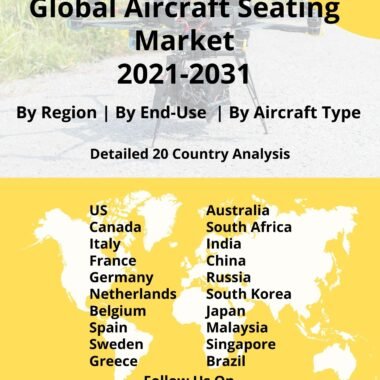Description
Frequently Asked Questions of AFMS Market
One of the most important avionics systems of a contemporary airplane is the flight maintenance management system (FMS). A sophisticated computer system called an FMS automates a wide range of in-flight activities, lightening the strain on the flight crew to the point where flight engineers and navigators are no longer carried on modern commercial aircraft. The management of the flight plan while in flight is a key duty. The FMS can direct the aircraft along the flight plan by using a variety of sensors (such as GPS and INS, which are frequently supported by radio navigation) to detect the position of the aircraft. The FMS is often operated from the cockpit via a Control Display Unit (CDU), which includes a tiny screen, keyboard, and touch screen.
The Electronic Flight Instrument System (EFIS), Navigation Display (ND), or Multifunction Display receive the aircraft flight manual from the Flight Management System (FMS) for display (MFD). The Flight Management Computer (FMC), CDU, and a cross-talk bus make up the dual system known as the Flight Management System (FMS).
Major factors driving the growth of Aircraft Flight Management Systems Market
The growing aviation industry is anticipated to be one of the main factors that drive the growth associated with the Flight Control Systems Market. The overall growth dynamics of this segment are propelled by the burgeoning trends associated with the rapid market penetration of the ICT and IoT-based technologies into the market. The inclusion of technologies like AI and machine learning into aircraft avionics is poised to support the growth of this market. The overall operation across a said aircraft is optimized through a single onboard FMS system. This in turn is poised to increase the efficiency and ease of operation across an aircraft.
One of the key factors that are expected to drive the flight management systems market is the growing demand for commercial aircraft models. This is predominantly due to the growing propensity of air travel within the developed as well as developing economies. The changing economic scenario owing to the pandemic recovery has led to the gradual opening of global markets thus driving business as well as leisure-based travel. Increased RPK, as well as CTK, are noted to be some of the key factors that promote the demand for new aircraft. Additionally, several airliners have been recycling older models of aircraft and incorporating new technologies which are also poised to drive the growth associated with this market.
Trends influencing the growth of the Aircraft Flight Management Systems Market
Some of the key players within the Aircraft Flight Management Systems Market are noted to be Honeywell, Thales, GE Aviation, et al. As of May 19th, 2022, Airbus chose Honeywell’s Flight Control System to fulfill the air traffic management requirements for its coming fleet of A320, A330, and A350 aircraft. The FMS technology incorporates Electronic Flight Bags (EFBs) to ease the workload for pilots and to increase the efficiency associated with fuel savings in real-time. The new aircraft maintenance management for Airbus’s A320, A330, and A350 platforms merges several of the company’s current FMS products into a single offering. Earlier in May 2022, Airbus had contracted the company Thales for its Flight Management system which was to be incorporated into the French Company Pureflyt’s product. Some models of Airbus A320, A330, and A350 also use this Thales-based flight management system.
Several component manufacturers have also been trying to move towards sustainable practices. For instance, GE Aviation’s Flight Control System is known for its incorporation of Green Technology. Airlines operating Boeing’s 737 are poised to make use of this technology. This optimized landing is expected to reduce fuel used during both departure and arrival operations. This in turn is poised to reduce CO2 and NOx emissions by roughly 20% as opposed to standard arrival procedures.
Market Dynamics
The Green Approach is gaining rapid momentum within the commercial as well as military aviation sectors. The connotation was essentially derived from GE’s Advanced Continuous Descent Approach which focused on the robust involvement of GE Aviation in the NUP2+ project in Europe, which permitted certain select Boeing 737 aircraft in Sweden to use GE’s Flight Control Systems. The technology was employed to facilitate the flight of the aircraft at idle thrust from cruise to landing.
Developments
The Boeing 767 was the first aircraft to use the modern FMS, although there were older navigational computers. Now, even small aircraft like the Cessna 182 have FMS-like systems. An FMS has evolved through a variety of sizes, powers, and controls.
Elbit Systems subsidiary Universal Avionics (UA) has completed initial flight tests of its NexGen software-based interactive Flight Management System (i-FMS). The flight tests were carried out in Austria on a government-owned Bell 212 helicopter as part of a joint effort with Elbit to improve the customer’s flight management and navigation capabilities. Today’s airworthiness requirements for highly accurate and reliable positioning procedures and routes enabled by GNSS (Global Navigation Satellite System) are becoming increasingly complex. This includes support for RNAV (area navigation), RNP (required navigation procedures) approaches, and vertical navigation (VNAV) throughout all phases of flight. The goal of this flight test campaign was to allow the customer to use these NextGen capabilities in civilian airspace without special handling by air traffic control. The AB-212 helicopter crew practiced tactical manoeuvres in and around civilian airspace, demonstrating holding patterns and floating waypoints. Navigation sorties were flown to test the upgraded features of the i-FMS, such as loading and flying standard instrument departure and arrival routes (SID/STAR) of various types, with RNAV to and from heliports and airports. The system provided VNAV guidance during the climb, cruise, and descent phases of flight by utilizing actual and required navigation performance (ANP/RNP). In October, a second flight test was completed to further improve the system’s capabilities.






